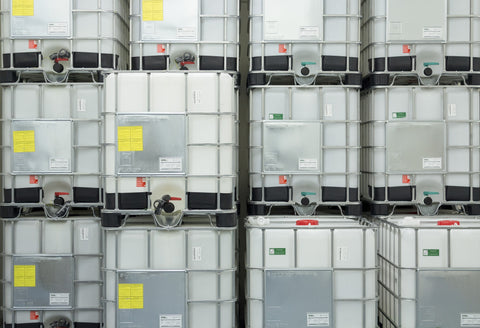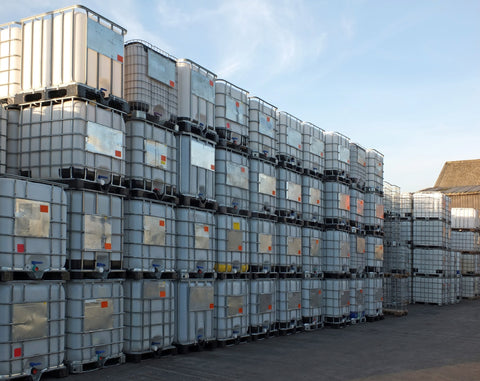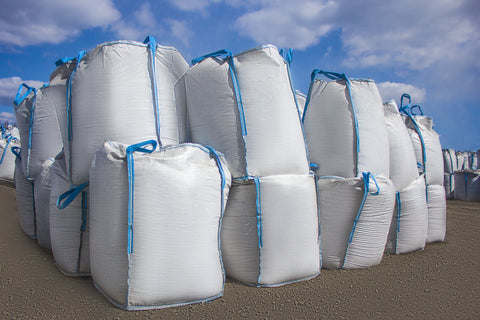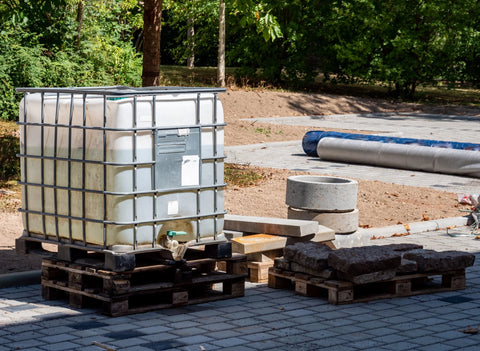Intermediate Bulk Containers (IBCs) are widely used in various industries to store and transport liquids and granular materials. They come in a wide variety of sizes and materials to meet a grand difference in needs across industries and companies. However, improper storage or handling can lead to moisture buildup inside IBC totes, which can compromise the quality of the stored contents and potentially lead to contamination. In this blog post, we will answer the question, of how to dry IBC totes, and explore the essential techniques and best practices for effectively drying IBC tanks to ensure the integrity of the stored materials and maximize the tote's lifespan.
Understanding the Importance of Drying IBC Totes
Before delving into the techniques, it's essential to understand why proper drying is crucial. Moisture inside the tank can cause chemical reactions, mold growth, and deterioration of the materials stored within. This can lead to significant financial losses for businesses and may even pose health risks in some cases. Thus, adopting appropriate drying methods becomes paramount.
Inspecting and Cleaning the IBC Totes:
The first step in the cleaning process is inspecting the IBC tanks for any damages or signs of moisture. Before proceeding with drying, ensure that the totes are clean and free from any residual liquids or particles. Thoroughly rinse the IBC tanks and allow them to dry naturally before initiating further steps.
Natural Air Drying:
One of the simplest methods to dry IBC totes is by employing natural air drying. Place the cleaned containers in a well-ventilated area with ample sunlight exposure. The warm air and sunlight will help evaporate any remaining moisture. However, this method might be time-consuming and may not be suitable for urgent requirements or humid environments.
Forced Air Drying:
For faster and more efficient drying, consider using forced air drying techniques. Utilize industrial fans or blowers to circulate warm, dry air inside. This method significantly reduces drying time and is particularly useful in environments with high humidity levels.

Desiccant Dehumidification:
Desiccant dehumidification is a reliable method for moisture removal. Desiccants are moisture-absorbing materials capable of reducing humidity levels inside the containers. They come in various forms, such as silica gel, molecular sieves, or activated alumina. Placing desiccant packs inside the IBCs and sealing them properly can effectively absorb excess moisture.
Vacuum Drying:
Vacuum drying is a more advanced technique suitable for specific scenarios where conventional methods may not be sufficient. This method involves creating a vacuum environment inside the IBC totes and introducing heat to accelerate moisture evaporation. Vacuum drying is ideal for moisture-sensitive materials or situations that demand rapid drying.

Using Dehumidifiers:
Dehumidifiers are powerful appliances designed to extract moisture from the air. When placed in a closed space with the IBC totes, they can help maintain optimal humidity levels and facilitate drying. This method is especially beneficial for large-scale operations or when dealing with many IBC totes.
Common FAQ's for cleaning Intermediate Bulk Containers
Some of the most common questions that come up when people are looking to understand how to properly clean and dry IBC totes are:
-
Q: What is the best way to clean an IBC tote?
-
A: The best way to clean a tote involves a thorough and systematic approach to ensure the removal of all residues and contaminants. Here's a step-by-step guide on how to clean a tote effectively:
-
Empty the IBC Tote:
Before beginning the cleaning process, ensure that the tank is entirely empty. If there are any remaining contents, transfer them to their appropriate storage or disposal containers.
-
Triple Rinse the Tote:
Triple rinsing is a standard procedure to remove any leftover residues from the previous content. Fill the tote with a suitable cleaning solution, such as water or a cleaning agent recommended for the previously stored material. Agitate the solution inside the tote by rocking it gently back and forth, and then drain the rinsing solution completely.
-
High-Pressure Washing:
Next, use a high-pressure washer to clean the interior of the tote thoroughly. The high-pressure stream of water helps to dislodge and remove stubborn residues and particles that might not have been removed during the rinsing process.
-
Exterior Cleaning:
While the interior is being cleaned, pay attention to the exterior of the IBC tote as well. Use a soft brush or sponge with mild detergent to clean the outer surfaces and remove any dirt or debris.
-
Sanitization:
After rinsing and washing, it's essential to sanitize the IBC tote to eliminate any remaining microorganisms or potential contaminants. Use a suitable sanitizing solution, and ensure it comes into contact with all interior surfaces of the tote. Follow the recommended contact time for the sanitizing agent to be effective.
-
Final Rinse:
Once the sanitizing agent has had enough contact time, perform a final rinse to remove any traces of the sanitizing solution. Ensure that the tote is entirely drained and free from any excess water or cleaning agents.
-
Drying:
Thoroughly dry the IBC tote before storing or using it again. If possible, let it air dry in a well-ventilated area. Ensure that all the access points, such as valves and caps, are also completely dry.
-
Inspection:
Before putting the IBC tote back into service, conduct a visual inspection to check for any signs of damage or wear. Ensure that all components, including valves, gaskets, and closures, are in good condition and functioning correctly.
-
Labeling and Storage:
If the IBC tote is not immediately reused, make sure to label it appropriately with its contents and the cleaning date. Store the tote in a clean and dry area, away from potential sources of contamination.
By following these steps, you can clean an IBC tote effectively, ensuring that it is ready for safe and contamination-free use in storing or transporting materials. Proper cleaning practices not only protect the stored materials but also extend the lifespan of the IBC tote itself.
-
-
-
Q: How do you get the smell out of an IBC?
-
A: Some of the most effective options for getting rid of the smell in an IBC tote are:
-
Vinegar Solution
After cleaning the IBC tote, you can use a natural deodorizing agent like white vinegar to neutralize odors. Create a solution of water and white vinegar (equal parts) and pour it into the IBC. Close the container and allow the solution to sit for several hours, ideally overnight.
-
Baking Soda Paste:
Baking soda is another excellent natural deodorizer. Create a thick paste of baking soda and water and apply it to the interior surfaces of the IBC tote. Let the paste sit for a few hours or overnight. Baking soda absorbs odors and can help eliminate any lingering smells.
-
Coffee Grounds:
Coffee grounds are effective at absorbing and neutralizing odors. Fill some old stockings or porous bags with coffee grounds and place them inside the IBC tote. Close the tank and allow the coffee grounds to absorb the smell over several hours or days, depending on the intensity of the odor.
-
Charcoal Briquettes:
Charcoal is known for its odor-absorbing properties. Place some charcoal briquettes inside the IBC tote, close the container, and let the charcoal work its magic for a few days. Make sure to use plain charcoal without any additives or lighter fluid.
-
Sunlight Exposure:
If possible, place the IBC tote in direct sunlight for a day or two. Sunlight can help break down and dissipate some odors, freshening up the container naturally.
-
Ventilation:
Ensure that the IBC tote is adequately ventilated during the deodorizing process. Opening the valve and allowing fresh air to circulate inside the container can help remove trapped odors.
Remember that the effectiveness of these methods depends on the severity of the odor and the type of material previously stored in the IBC tote. For persistent or particularly strong odors, you may need to repeat some of these steps or use a combination of deodorizing methods. You may also want to contact the manufacturer to inquire if they have any specific cleaning solutions that they suggest for their specific totes. Additionally, it's essential to identify and address any underlying issues that may be causing the odors, such as contamination or leakage, to prevent future smells from developing.
If all else fails, you can also hire a professional cleaning service to reach your desired result. These companies may use a pressure washer or special high-grade cleaning solution to get the smell out of the tank.
-
-
Q: Are IBC Tanks safe for water?
-
A: Yes, IBC tanks are generally safe for storing water. IBC tanks are designed and manufactured to meet strict safety standards, making them suitable for holding various liquids, including water. However, it is essential to ensure that the IBC tank is clean and free from any contaminants before using it for storing water to maintain water quality and safety. Regular inspection, cleaning, and proper maintenance are key to ensuring the continued safety and suitability of IBC tanks for water storage.
-
Regular Maintenance and Monitoring
Lastly, it's essential to incorporate regular maintenance and monitoring practices to prevent moisture-related issues in the future. Inspect the IBC totes periodically for signs of moisture buildup and promptly address any concerns. Implementing preventive measures can save time, money, and resources in the long run.
Effectively drying IBC totes is vital for preserving the quality of the materials stored within and ensuring the containers' longevity. Whether you opt for natural air drying, forced air drying, desiccant dehumidification, vacuum drying, or the use of dehumidifiers, choosing the appropriate method depends on factors such as the type of material stored, environmental conditions, and the scale of operations. By following the essential techniques and best practices outlined in this article, you can safeguard your business from potential losses and maintain the integrity of your stored goods.







